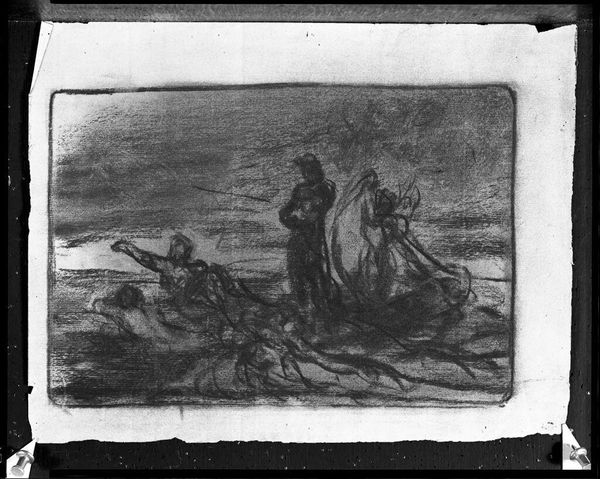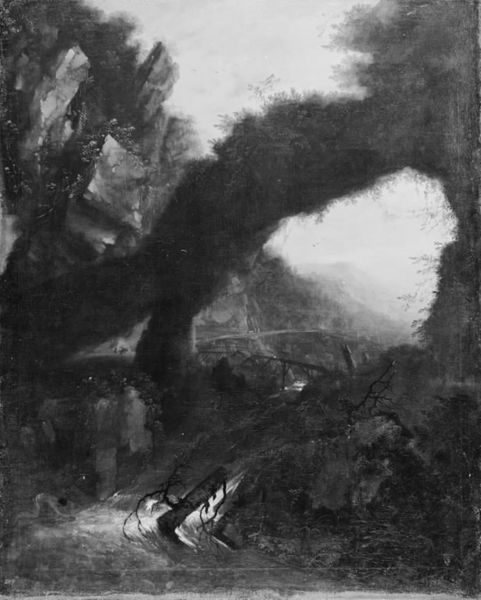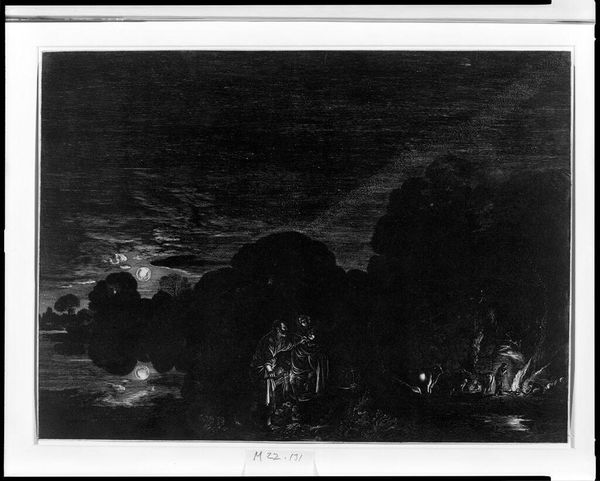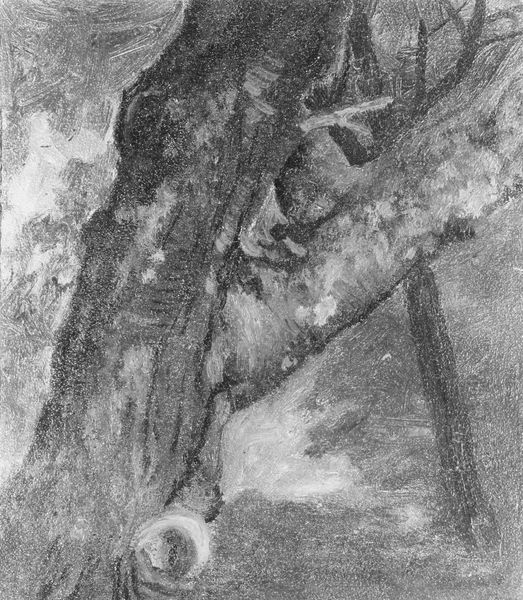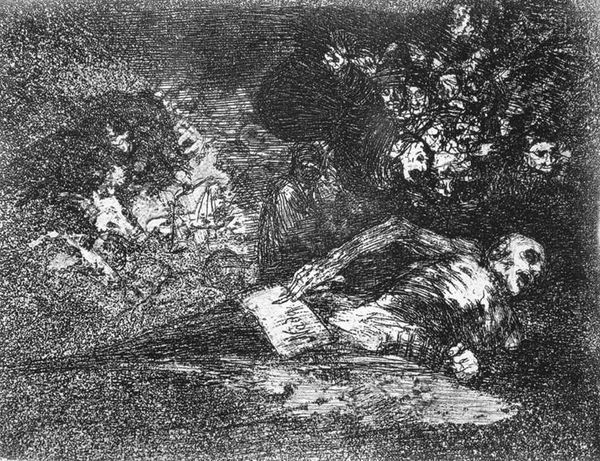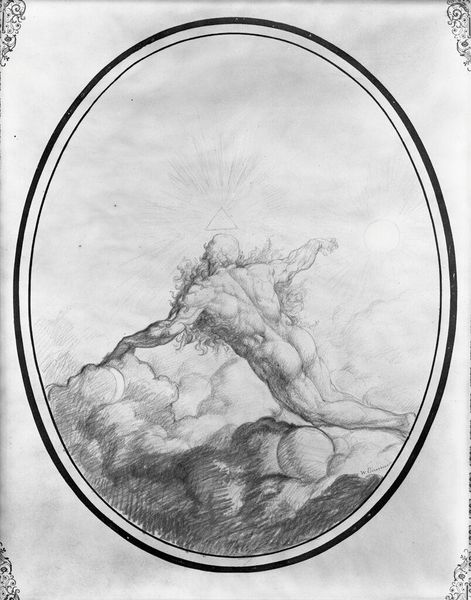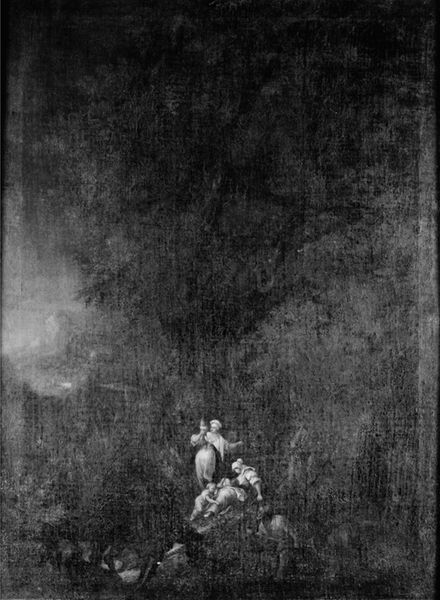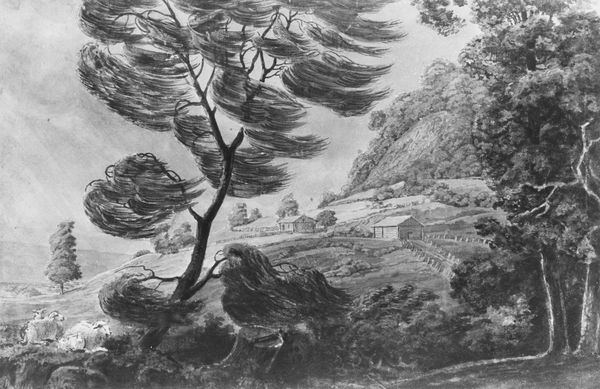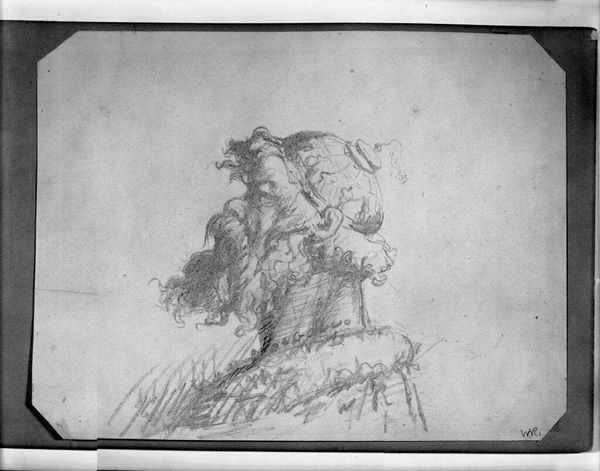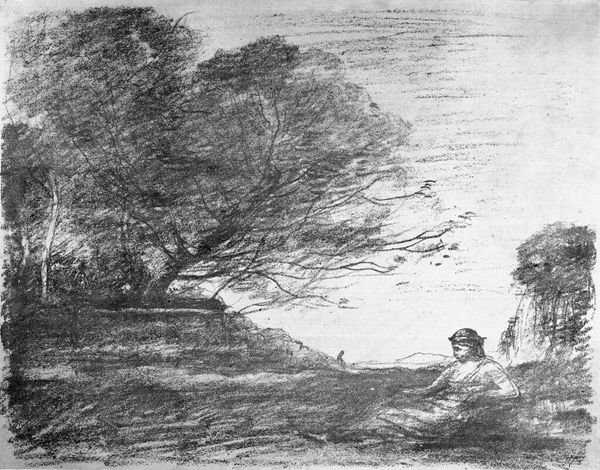
Dimensions: sheet: 9 x 12 in. (22.8 x 30.5 cm) (trimmed to picture line)
Copyright: Public Domain
Alexander Cozens created "The Fallen Tree" using brush and black ink on paper in 18th-century Britain. Cozens was a drawing master, and this piece reflects the period's emphasis on landscape as a means of cultivating taste and sensibility. The image, with its dramatic, gnarled tree set against a turbulent sky, evokes the aesthetic category of the Sublime. The sublime landscape became popular in Britain during a period of rapid social and economic change. Picturesque scenes were valued, particularly as emblems of national identity. Cozens's artistic practice—he developed a method of generating landscape compositions from abstract blots—also reflects broader intellectual trends of the Enlightenment. His work, however, moves away from earlier approaches that emphasized idealized beauty and formal balance, and toward the expression of emotion and individual experience. To understand its significance fully, we must consider the social and philosophical contexts in which it emerged, researching the aesthetic theories and artistic practices of 18th-century Britain.
Comments
No comments
Be the first to comment and join the conversation on the ultimate creative platform.
